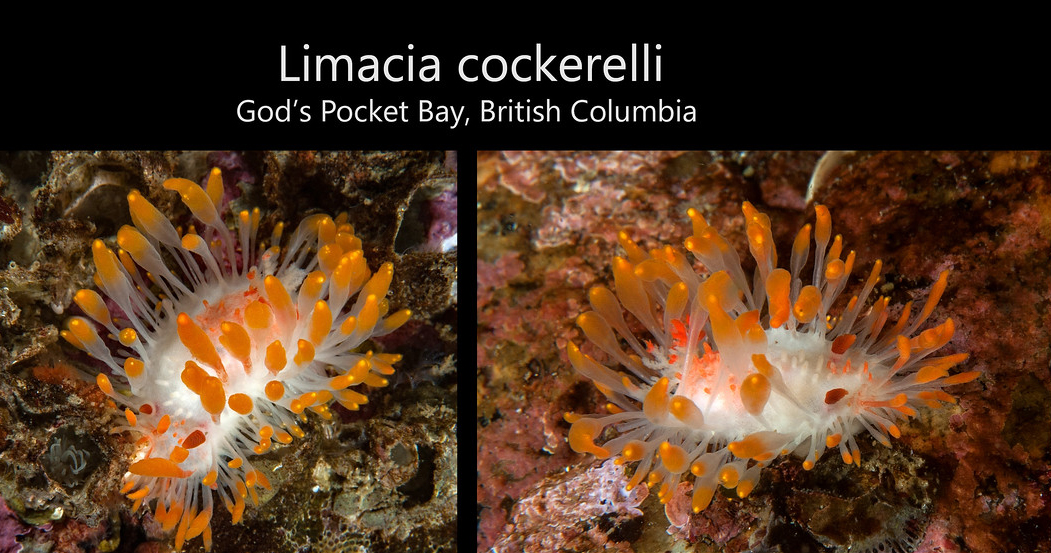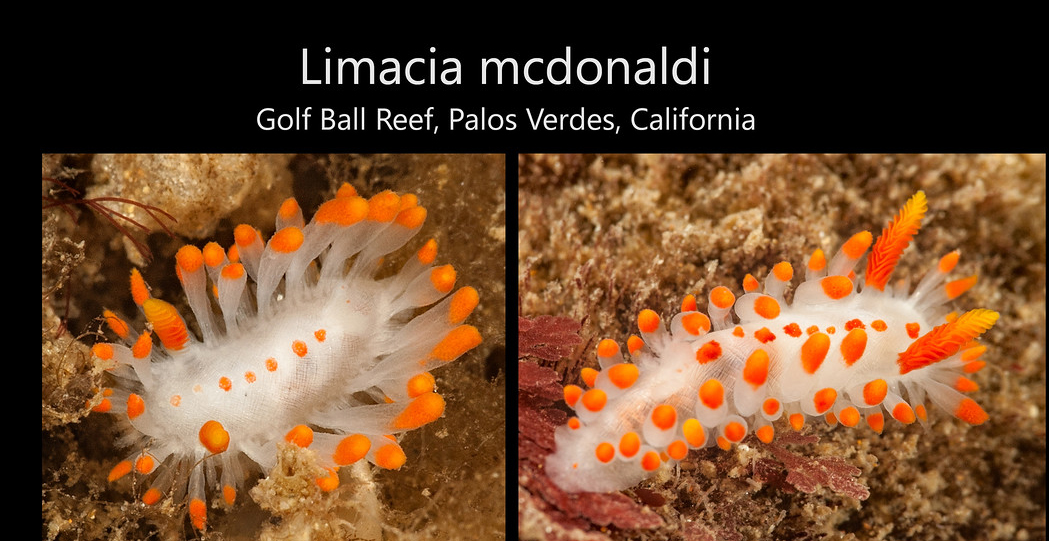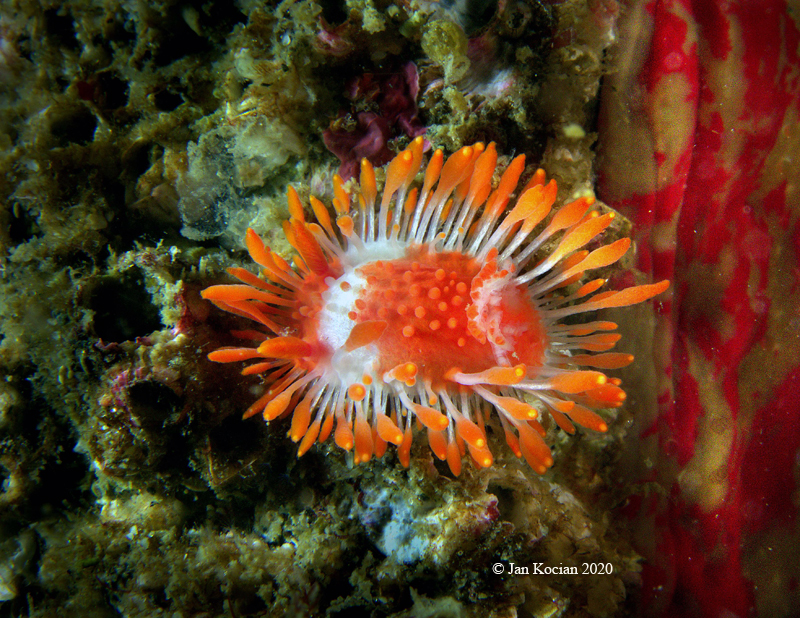 |
Limacia cockerelli
Image courtesy of Merry Passage
 |
Limacia mcdonaldi
Image courtesy of Merry Passage
Limacia sp.
Image courtesy of Jan Kocian
 |
The Eastern Pacific Limacia mess - Limacia cockerelli, L. mcdonaldi and the other one
For years now we have known that there were at least three distinct species of Limacia (back then placed in the genus Liala), along the Pacific coast of North America. Angel and company finally drew the lines, but unfortunately not all the way. In Uribe et al. 2017, they cleared up part of the dilemma, by distinguishing the differences between the critter with the white notal spots and the red notal spots. They were not able to clear up the question of the variant with the large red notal patches as they had no properly preserved specimens for protein sequencing available. Bummer. Limacia cockerelli (MacFarland, 1905) - The original species L. cockerelli is retained for the critters having scattered white tubercles on the notum. Its range - Ketchikan, Alaska to San Diego, California. Limacia mcdonaldi Uribe, Sepulveda, Goddard and Valdes, 2017 - This new species designation, named after slug enthusiast Gary McDonald, aka McDuck, is given to the critters that have a single row of red tubercles on the notum. Its range - California to Ensenada, Baja California, Mexico. But then there is what I shall call Limacia sp. for the time being. This undescribed species (seen at left) has a large patch of red on the notum with red tipped tubercles, both anterior to the rhinophores and surrounding the gill. It current geographic is - Puget Sound, Washington to Vancouver, British Columbia, Canada, but there are dozens of photographs of this color variation on the internet from Anacapa Island, off Santa Barbara, CA. This species needs more examination. References: Uribe, R.A., F. Sepulveda, J.H.R. Goddard & A. Valdes. 2017. Integrative systematic of the genus Limacia O.F. Muller, 1781 (Mollusca, Gastropoda, Nudibranchia, Polyceridae) in the Eastern Pacific. Marine Biodiversity 48: 1815-1832. |
Sammamish, WA 98074
Jun. 2020

Attention all you Sluggers, and you know who you are! The NSSI 2nd edition is available in ebook PDF and book form . The hard back version will become available Nov. 1st. Both will cost $65 (individually). You will need to jump through a few hoops to get the electronic version as pdf distribution is protected by Adobe ID!! Please read the following to enable reading your electronic purchase! This new 2nd Edition is updated and reorganized, including 185 new species. Among other features, the new edition includes additional photographs of species, an identification key, and an up-to-date classification reflecting the latest evolutionary relationships. The Indo-Pacific represents the largest expanse of tropical ocean in the world, stretching from the Indian Ocean coast of southern Africa and the Red Sea to the central Pacific of the Hawaiian Islands, Easter Island and the Marquesas. This region supports the most diverse marine fauna of any place in the world for most groups of marine organisms. The nudibranchs and sea slugs are no exception to this rule; there are about 3,000 described species of these organisms in the world and at least 40% of these have been found exclusively in the Indo-Pacific tropics. This book illustrates 2,138 Indo-Pacific nudibranchs and sea slugs, including many undescribed species.
|
